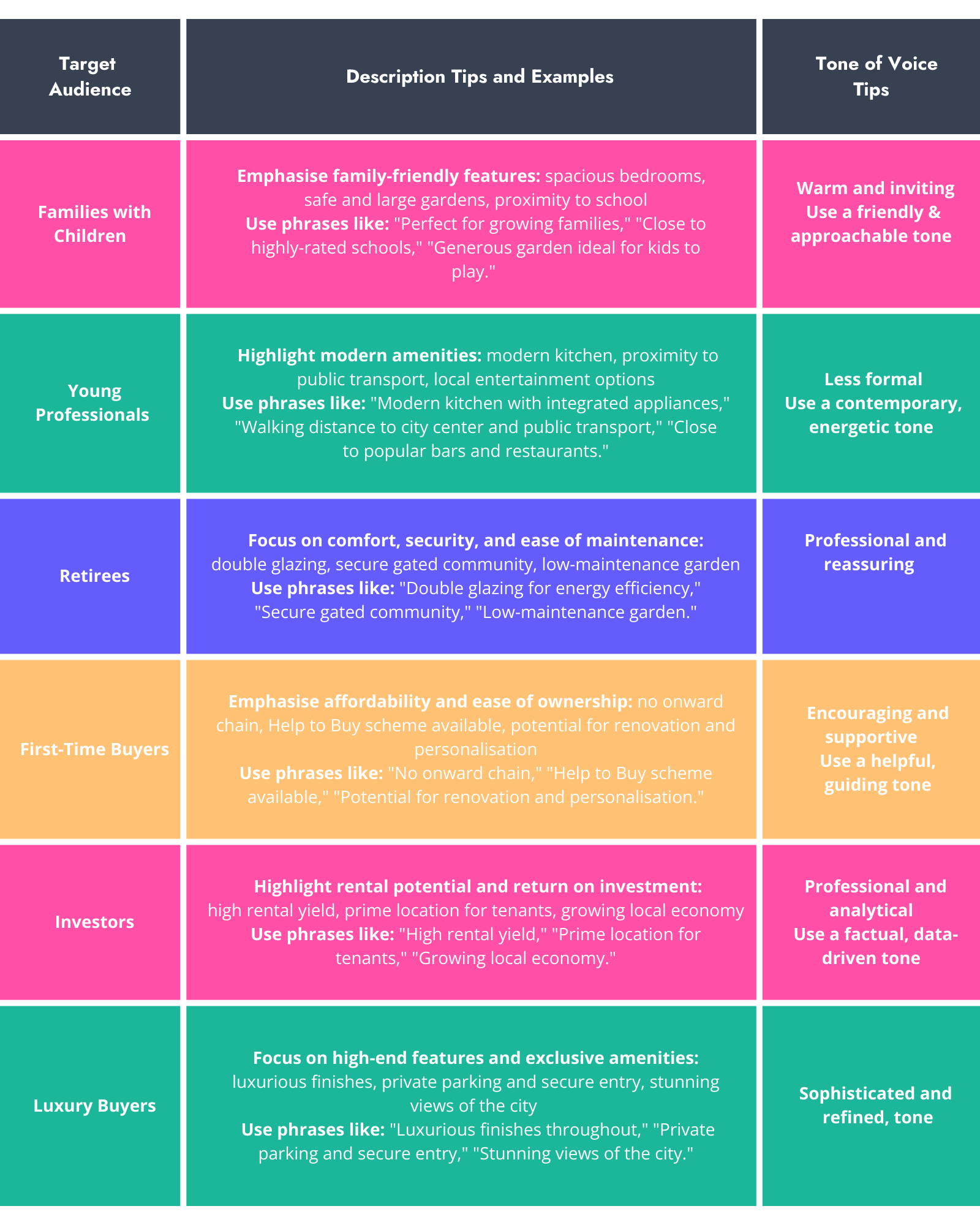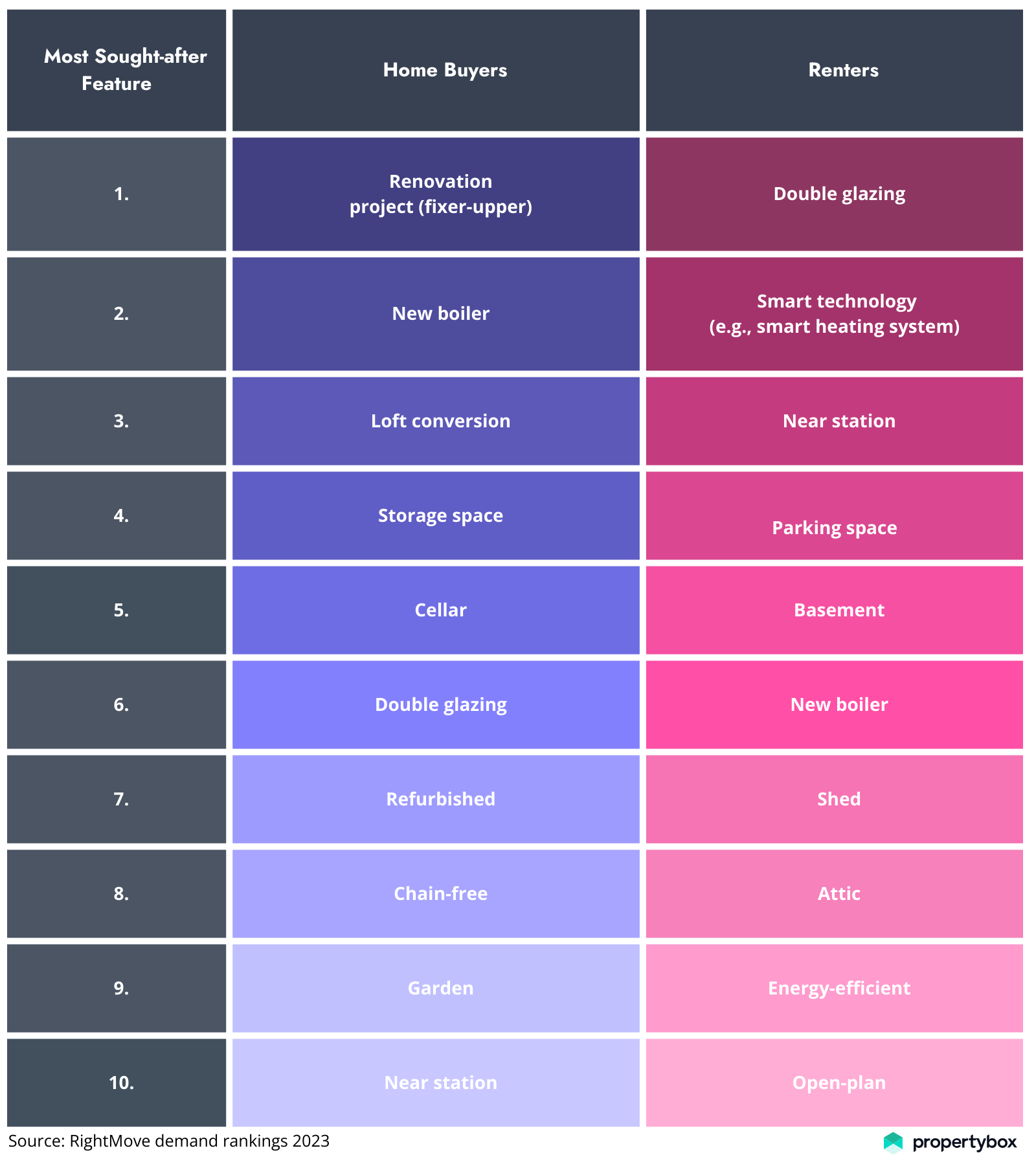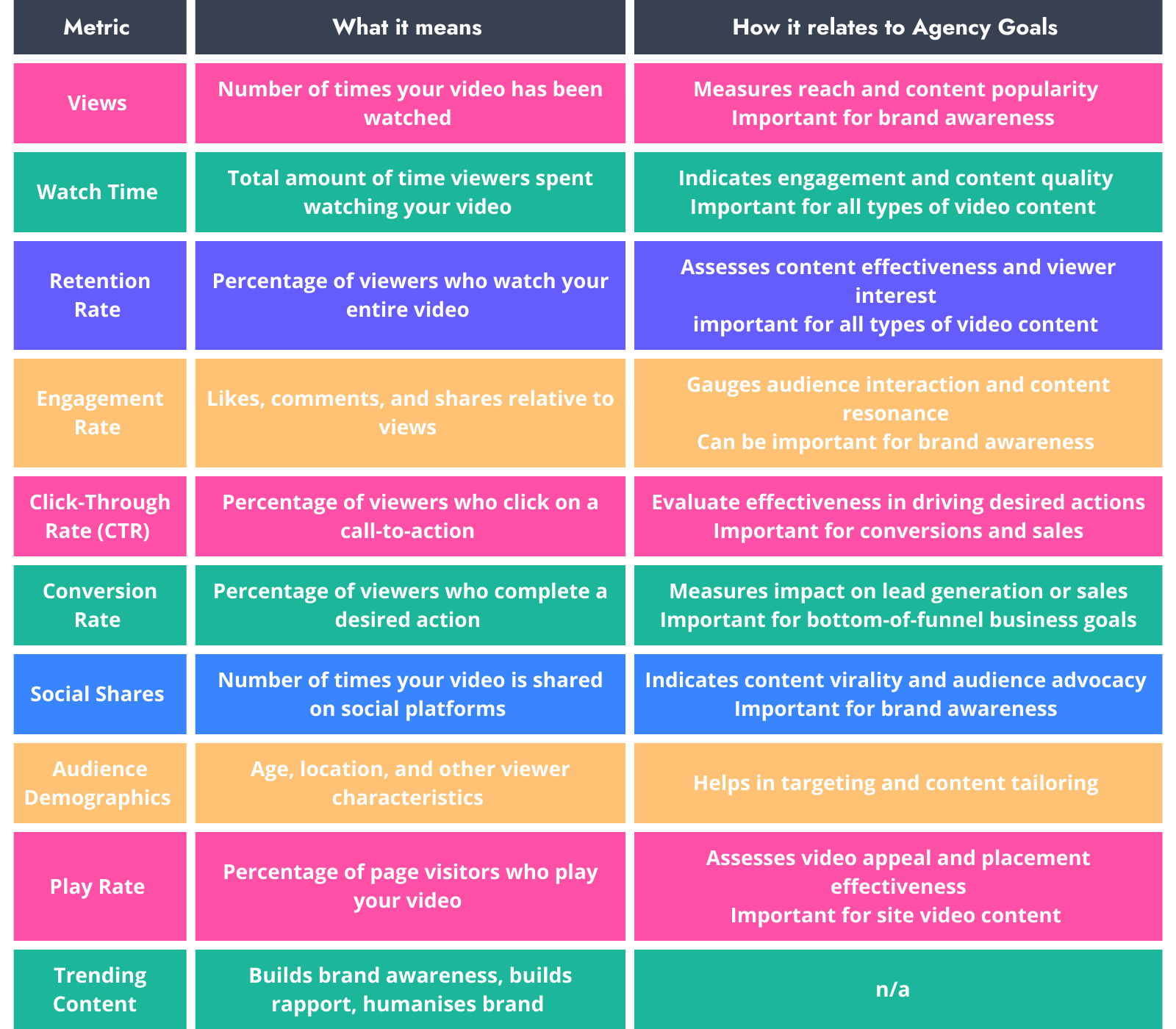Contents
Share
Property descriptions are arguably one of the most important elements of a property listing.
It’s normally photos that grab the buyer’s attention, so property photography is vital, but if your property description isn’t well written, you’re unlikely to convert your reader.
View your property descriptions as an opportunity to make your listings stand out, demonstrate the quality of your agency, and motivate homebuyers to action.
In this blog, we’ll outline how to adapt your property description writing for different audiences, the ideal structure and must-haves, three golden rules for property descriptions and useful AI tips and tricks.
The Benefits of Writing a Good Property Description

You have a million things to be doing as an agent, so why spend your time and effort writing excellent property descriptions?
A good property description will help your property listing stand out in the competitive real estate industry. And when done write, it allows you to:
1. Boost online visibility: using relevant keywords can improve your listing’s visibility in search results. Such keywords can include the property type and location.
High-quality content, increased user satisfaction, reduced bounce rates and professional formatting also increase site credibility, boosting your site’s overall SEO.
2. Reflect the quality of your agency: 43% of homebuyers would lose interest in a property if it had spelling mistakes in the listing. A well-written description gives the searcher insight into the kind of agency you are, and the kind of service you will provide.
3. Drive action: A strategically written description will encourage the reader to take action. Whether this is a click, filling out a contact form, or a different CTA, a good description will get you a step closer to meeting your targets.
Effective property descriptions have a lasting impact that goes beyond simply marketing an individual listing. They can influence how home buyers perceive your agency’s brand and contribute to long-term SEO benefits.
How to Write Property Descriptions for Your Target Audience

Considering your audience is the key to any effective piece of marketing copy.
Before you start writing your description, think about who is going to be interested in this type of property, and how you should adapt your writing to connect with them.
As well as considering which features to highlight, consider how your tone of voice could resonate with a particular audience
Take a look at our cheat sheet below for some tips on how to write property descriptions for different audiences.

Writing Your Property Description – What Should Agents Include?
1. Headline
Your headline should give the essential property information. Don’t overcomplicate it, think about the key information buyers are filtering by – the number of bedrooms, type of property, location, and stand-out features.
e.g. ‘Stylish 2-Bed Apartment in the Heart of the City’
2. Opening Statement or Summary
Next, Include a concise opening paragraph expanding on the headline. Provide a brief overview of the property, highlighting its benefits.
Introducing this luxurious 2-bedroom flat located in the city centre. Featuring panoramic city views, modern amenities, and excellent public transport links, this apartment is ideal for young couples or professionals.
3. Detailed Property Description
This is where you’ll include the details of the property. Remember, you want to provide the reader with the required information to make an informed decision, without losing their interest.
Avoid adding information that has already been included in the headline and opening statement. Aim for 250 words or less to keep the reader engaged.
Highlight features of the property that were not essential enough to be included in the headline and opening statement, but still add value to the property e.g. balconies, number of bathrooms, basements, integrated appliances, fireplaces.
This is also the time to include details about the property’s condition, any recent renovations, and provide further insights into the surrounding area and local amenities e.g. schools, hospitals, and shopping centres.
Also, ensure you include any relevant information regarding the sale e.g. no onward chain, immediate exchange of contracts available.
Unsure which features to highlight? A report by RightMove found these are the 10 most popular features for homebuyers and renters:

How to Highlight the Property’s Features
As this full-length segment is substantially longer, you can be more descriptive. Take advantage of this and try to integrate emotive language and adjectives to characterise the features and to help your readers envision themselves in the property (e.g. “Charming roof terrace” “Airy dual aspect living room”.)
Buying property is an emotionally driven experience, so storytelling can be an effective copywriting tactic for listing descriptions.
Elaborating on the property’s features and explicitly stating the benefits is another way to demonstrate the potential of the property to the reader.
e.g. The dual-aspect design of the living room ensures an abundance of natural light, creating a bright and inviting open space
4. Bullet list
Look back at the content you have written and create a bullet list of the property’s most appealing features. This could be anything from chain information to security systems to location details. Ask yourself if you could only tell the homebuyer 4-8 things about the property – what would they be? Remember to keep your target audience in mind!
Listing features like this allows buyers to skim-read and quickly digest the property’s best features. It acts like a hook to entice them to read the rest of your full description. This will normally be positioned towards the top of a listing.
5. Call to Action
Last, but definitely not least, is the call to action. What good is it writing a fantastic property listing if you’re not telling the reader what to do if they are interested?
You, of course, know what you want an interested reader to do, so make sure they do too! Make it easy for them by ensuring your CTA Is direct, simple and stands out.
E.g. Contact the agent here, Schedule your tour here
Three Golden Rules for Property Description Writing
1. Be Concise and Clear
No one likes waffle. Yes, you want your property listings to be descriptive and compelling, however, you want to ensure that the listing is easy to read and to the point.
Homebuyers are reading hundreds of property descriptions, so they want to get the information they need quickly, without unnecessarily complicated phrasing.
2. Be Positive
We’re sure we don’t need to tell you this, but just in case, ensure your listing is filled with positive adjectives and imagery that paint an enticing vision for the reader.
Stuck using the same boring adjectives for your properties? Here are a few you could use to keep things interesting:

3. Be Honest
It may be easy to get carried away with rule number two, but our most important guidance is to be honest! Only include factually correct information and don’t bend the truth. The ramifications for being dishonest in property listings can be reputationally damaging, and legally impactful.
How to Write Property Descriptions Using AI?
It’s hard to talk about copywriting in 2024 without mentioning AI. Here are ways you can use it to simplify property description creation.
Creating an Initial Draft
If you find getting started with your property description hard, using ChatGPT or Perplexity is a good way to create a starting point. Enter your property information and prompt it to create a draft property description. You can then use this as a building block to edit and refine as you choose.
Grammar Checking
AI is making spelling errors an increasingly rare occurrence in property descriptions. Make sure you don’t stand out for the wrong reasons and ensure you are checking your content before posting the listing. You can do this again by using the tools mentioned above, pasting your listing, and prompting for a grammar check.
Property Description Generators
Description generators like PropertyBox’s AI Descriptions tool allow you to create your property listings in seconds. After inputting core information about the property, you can choose your tone of voice, and description length the tool will generate a full-length description, a summary and a feature bullet point list. This tool is specifically created to write descriptions for agents, so you don’t have to worry about getting a prompt right.
All the content will be grammatically correct and you can make any tweaks you wish to make it sound a little more like you!
Conclusion
There you go – an in-depth guide on how to write property descriptions!
To conclude: write for your audience, follow a description structure, stick to our three golden rules, and utilise AI where necessary.
Follow these tips and you’ll be on your way to creating listing descriptions that rocket your listing engagement, and get those leads rolling in.
Happy Listing!



